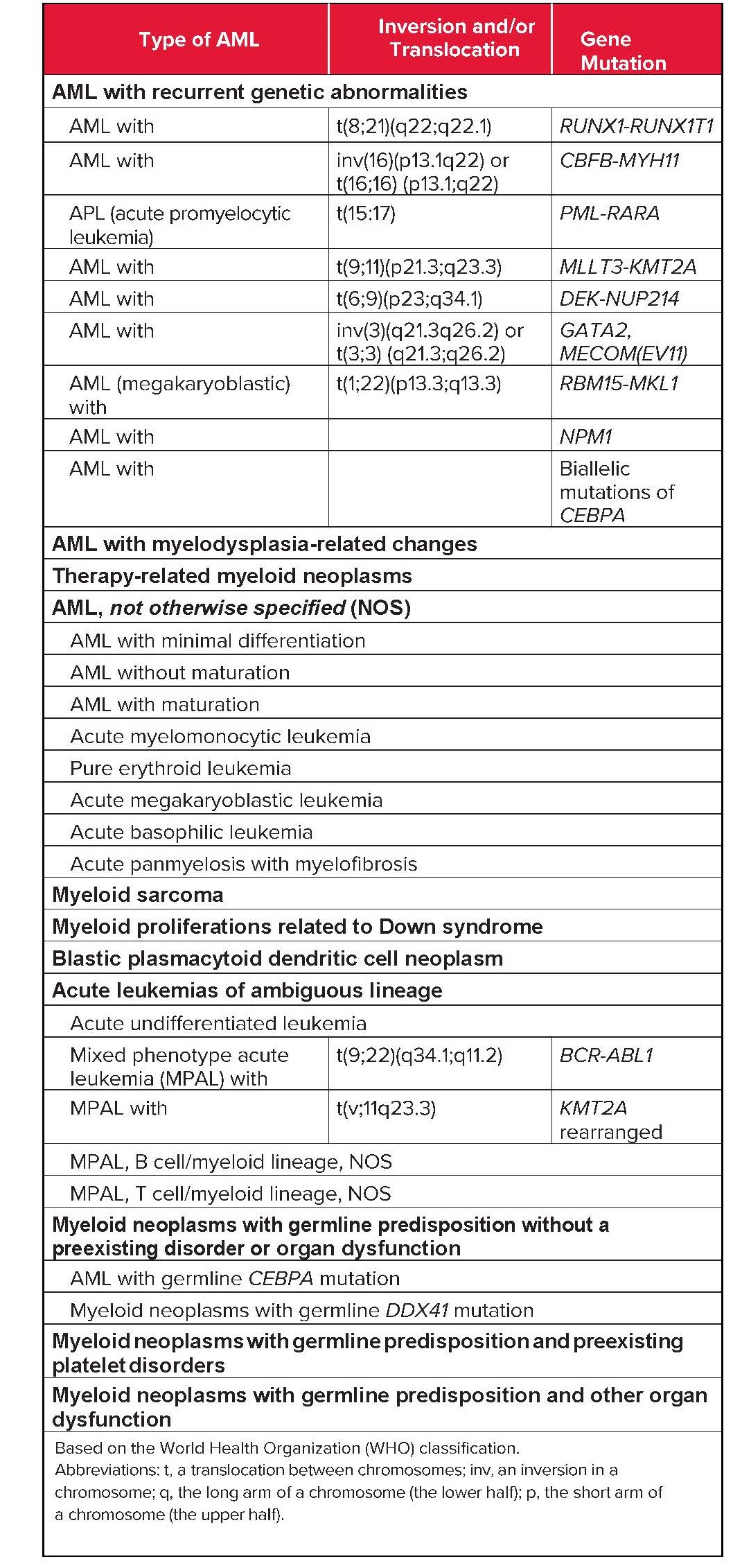It's important to know your AML subtype because it plays a large part in determining the type of treatment you'll receive. The World Health Organization (WHO) classification is the main system used to classify AML into subtypes.
World Health Organization (WHO) Classification System
In 1999, the World Health Organization (WHO) developed a new classification system to include prognostic (predictive) factors, such as chromosomal abnormalities and genetic mutations that are known to affect the future outcome of the disease. These genetic factors help provide patients and their doctors with more reliable information regarding their probable outcome (prognosis), as well as their probable response to treatment. The WHO classification is usually revised every eight years. The revised 2016 classification incorporates new scientific and clinical information.
Acute Myloid Leukemia (AML) and Related Neoplasms
Related Links
- Download or order The Leukemia & Lymphoma Society's free booklets


